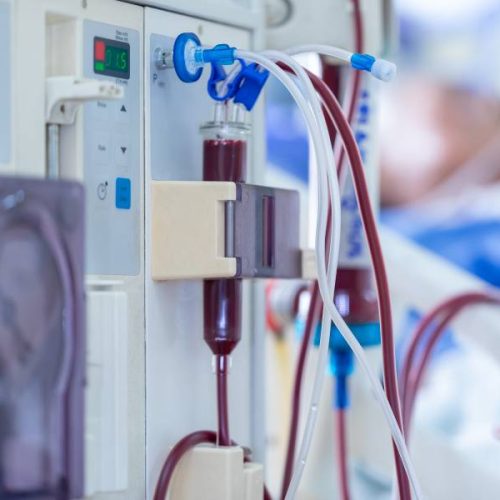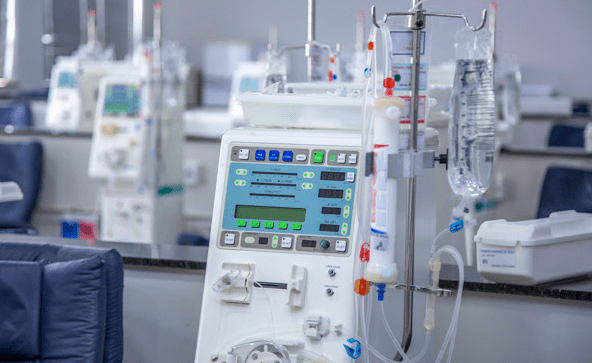Hemodialysis Access Care



Hemodialysis Access Care
Dialysis is a medical procedure used to treat patients who have kidney failure. The kidney fails to filter the blood of wastes, such as urea or any excess fluid, when it is in this condition. Hemodialysis, often known as dialysis, is a procedure that involves sucking blood from the body into a machine. This method filters wastes and removes excess fluid from the blood using a specific membrane (Dialyzer). It also helps to restore blood electrolyte balance. Dialysis is normally done three times a week and takes about three hours.



Hemodialysis Access
Hemodialysis Access, commonly known as “Vascular Access,” is a method of removing blood for hemodialysis. The necessity to remove defective blood from the body and replenish it necessitates the use of hemodialysis to gain access to the patient’s blood circulation. Dialysis Fistula, Graft, and Catheter are three different types of operations for this, some of which are interchangeable. All of these approaches may simultaneously remove and reintroduce significant amounts of blood into the body—roughly one quart every minute.
FAQ's
A fistula is a blood vascular connection that has been formed (artery & vein). It is regarded as the most desirable vascular access for hemodialysis. Surgeons produce an arteriovenous fistula by connecting an artery to a vein in the upper arm or forearm, allowing blood to flow freely.
The vein widens over time, usually one to three months, and prepares to receive the needles used to extract and supply blood during dialysis. If a fistula matures well, that is, if it develops properly, it might last for years. If hemodialysis is required during the growth of a fistula, another kind of vascular access, usually by a catheter, will be required.
Up to one-fourth of patients will have a non-maturing or non-developing fistula. A non-maturing fistula can be caused by either a constriction of a vein or the presence of too many competing veins. Interventional radiologists can use a balloon to open up a narrowed vein (Balloon Angioplasty) or use a variety of techniques to block up rival veins. Around three-quarters of persons with non-maturing fistulas will benefit from one or both of these treatments, and their fistula will mature.
Because some patients’ arteries or veins aren’t suitable for establishing a fistula, a graft (or shunt) can be used as an alternative form of Dialysis Access. This option consists of a plastic tube that joins an artery and a vein. The grafts, unlike fistulas, do not need to “develop” and are usually ready to use four weeks following implantation. Dialysis may need the use of a catheter at this time. Grafts have the disadvantage of not lasting nearly as long as fistulas and are more prone to constriction and clotting. Aside from that, there’s something about grafts that doesn’t happen very often with fistulas. – they can get infected.
Narrowing veins with grafts can be recognised before they clot if the appropriate screening techniques are used. These include self-examination, interventional radiologist visits, and dialysis flow measurements. You should be scheduled for interventional radiology treatment as soon as possible when the doctors find an issue. To avoid clotting, patients must keep their interventional radiology appointments on time. In the event of clotting, the patient need not be concerned because an interventional radiologist can effectively treat it.
Screening for poor dialysis access can be done in a variety of ways, the easiest of which is self-examination. The best and simplest method is USG doppler, which our experts can perform. If there is a problem with the flow, schedule an appointment with one of our experts for a fistulogram and, if necessary, balloon angioplasty.
